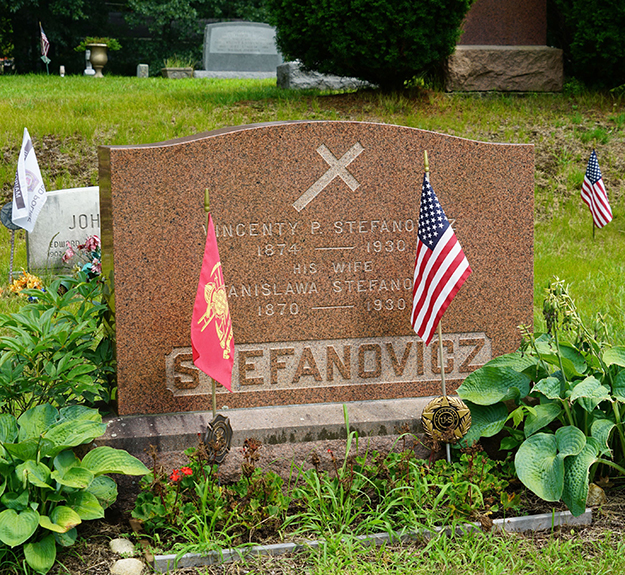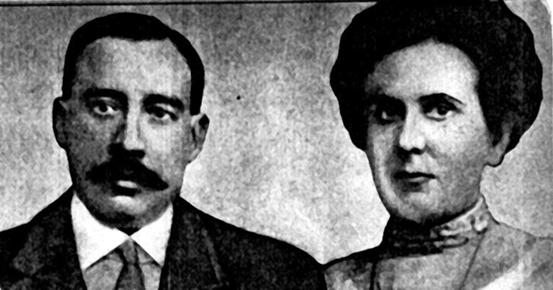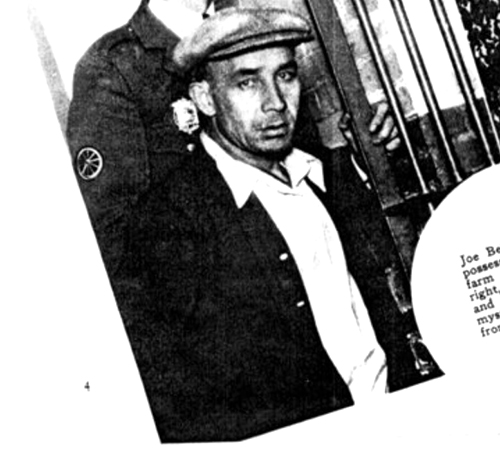
The Stefanovicz grave (photo from findagrave.com)
Footprints of History:
The Murder House, Part 1
By Stephanie Lewis
A slow drive by the blue colonial house on Hudson Road would not portend of its gruesome history. From the outside, it looks like many other antique homes in Stow. This house, however, would tell a story of deceit, treachery, and murder if the walls could talk.
On Aug. 10, 1930, four teenage boys stumbled upon a scene that no one should ever see. While wandering through the woods along with a friend’s dog, they were alerted by the canine to a disturbance. Running over to see what the dog was barking at, the boys witnessed a human bone sticking out of the ground, only partially covered by the dirt. One of the young men sprinted to the police who were gathered a third of a mile away, along with hundreds of local citizens, searching for just such a find. The police followed the teen and discovered exactly what they had been seeking for the previous four days.

For three years, Wincenty (William) and Stanislava (Stacia) Stefanovicz lived a quiet life on the farm once owned by six generations of Hales, in a farmhouse known as the George Hale House. They had moved there after living in Concord Junction, where William had worked as an auto mechanic and Stacia a homemaker.
William purchased the farm despite Stacia’s misgivings about leaving the conveniences of life in Concord, including a telephone and electric lights, as her neighbor Mrs. George Edson relayed to police and reporters for the Boston Globe. The Stefanovicz’s fate would be sealed when William hired a farmhand named Joseph Stefanosky to help him on the farm.

Joe Stefanosky was a Russian immigrant who had once worked as a stoker for Portsmouth Gas Company. Stefanosky was a name that he took prior to working on the Stefanovicz farm. He had many others, though. He also went by Stefanovicz, pretending to be a member of their family, Groboski, and Belenski. Belenski appears to be his legal name.
Joe Belenski, aka Joe Stefanosky, had a history of violence, most evident in his marriage to Alice Belaski, a fellow Russian immigrant. Alice told police and reporters for the Globe that she had married Joe just one year after arriving in America, 17 years earlier. They were married for seven years, during which Alice left twice due to Joe’s abuse, before he deserted her and their two children. They had lived in Hyde Park and Lynn before he left the family ten years prior.
That history of violence likely continued into his life on the Stefanovicz farm, as Stacia told her friend Mrs. Edson that she was scared to go home during the last visit they shared. Mrs. Edson relayed to the Boston Globe that she wondered if that fear was due to Mr. Belenski.

On May 21, 1930, William Stefanovicz visited his physician in Maynard for a minor stomach issue. He ran into a friend while there. These two men were the last to see William alive outside of the farm. The last time Stacia had been seen was days before this. Between May 21 and Aug. 7, William and Stacia’s lives would be taken.
Visitors to the Stefanovicz farm in late May and beyond were greeted by Joe rather than William or Stacia. Joe explained away their absence by saying that the elderly couple were away, with William getting stomach surgery in Chicago and Stacia visiting friends in Everett. Joe relayed to most everyone who came to the farm that he believed that William had died in Chicago, but that William had deeded the farm to Joe prior to leaving. The only people who heard a different story were those who were looking to collect on debts owed by the Stefanviczes. To them, he said that he was just a hired farmhand.
Look for the continuation of the story, part 2 of 3, in the Aug. 14 print edition.